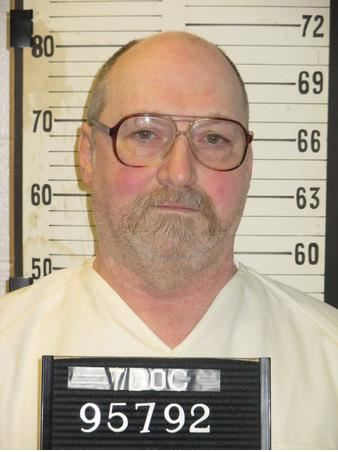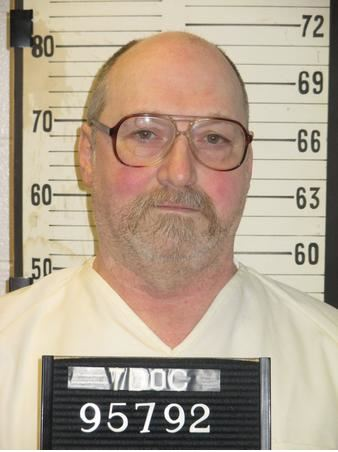
David Earl Miller
From a distance, the backstories of Billy Ray Irick and David Earl Miller start to run together.
Irick, who was executed by the state of Tennessee by lethal injection on Aug. 9, was sent to a mental health institution when he was just 6 years old. His parents had their own histories of mental and emotional instability, and Irick said they physically abused him. Episodes of severe mental illness marked the rest of his life outside prison.
Miller, who is set to be executed on Dec. 6, has a history of mental illness, abuse, trauma and addiction that is disturbing to read. After a childhood and early adulthood his attorneys describe as an “unspeakable horror,” Miller was convicted and sentenced to death in March 1982 for the murder of Lee Standifer, a mentally handicapped woman he’d been dating. He was 24 at the time.
As they did in Irick’s case, lawyers and medical experts have argued that he was suffering from severe mental disorders when he committed the crime for which he was sentenced to death. But now, at 61, he is set to become the third man executed by the state of Tennessee within just four months. Barring action from a court or intervention from Gov. Bill Haslam — who has shown no inclination to stop executions — Miller will be the next Tennessee prisoner with a history of severe mental illness whose life ends with an act of carefully planned state violence.
There’s a dispute at the center of Miller’s case over whether his brutal murder of Standifer in 1981 was itself an intentional and conscious act of violence or the result of a psychotic episode.
According to court documents, Miller struck Standifer at least three times with a fireplace poker, killing her, and stabbed her dead body at least six times. One stabbing appeared to have occured with such force that the state’s medical examiner suggested the knife might have been driven into Standifer’s body with a hammer. Her body was found, with her hands tied, near a wooded area some 60 feet from the home the two had been in.
Prosecutors asserted at the trial that the murder had taken place after Miller sexually assaulted Standifer. The state’s medical examiner found evidence that sexual intercourse had taken place, but Standifer’s body showed no signs of sexual assault. The court determined that there was not enough evidence of sexual assault to put it before the jury. Later, during Miller’s sentencing, a different judge allowed prosecutors to present that charge to a jury, but the jury rejected it.
Miller’s attorneys argue that the murder was the result of mental illness. Moreover, according to court documents, he’d been drinking heavily prior to the offense, and also took LSD. After his arrest, Miller said he had little memory of the events, although according to a court document, he recalled that “he had told the victim that he was leaving town to return to Texas and that she had become upset and grabbed his arm.”
In testimony presented during federal court proceedings in 2003, Dr. Pablo Stewart — a physician specializing in clinical and forensic psychiatry — concluded: “Mental diseases and defects were present and acute at the time of the offense for which Mr. Miller was convicted, rendering him unable to appreciate the criminality of his acts, as well as LSD (lysergic acid diethylamide) [which] can induce illusions, hallucinations, delusions, paranoid ideations and other alterations of mood and thinking, rendering him unable to conform his conduct to the requirements of the law.”
Citing his review of Miller’s “social and medical history, including academic records, child protective service records, affidavits and testimony of family members, statements to law enforcement and testimony, and excerpts of legal proceedings,” Stewart details Miller’s childhood and early adulthood. Miller, he writes, has “a remarkable history of recurrent episodes of psychosis.”
As outlined by Stewart, Miller’s story is a chilling tale of the way that factors outside of one’s control can deform a life.
His mother, Loretta Jean Winkelman, had worked on an assembly line and was later “diagnosed with brain disease secondary to toxin exposure to solvents used in plastics manufacturing,” and she drank throughout her pregnancy. According to Stewart, she and Miller’s biological father both suffered from mental illness, and she sexually abused her son for several years. Later, when she married another man, Miller’s stepfather would beat him brutally. In one incident Stewart writes about, Miller’s stepfather “knocked David out of a chair, hit him with a board, threw him into a refrigerator with such force it dented the refrigerator and bloodied David’s head, dragged him through the house by his hair, and twice ran David’s head through the wall.”
Miller repeatedly fled his home throughout his childhood, but as the years went on he found no refuge from violence and trauma. He attended a boys’ school that was defined by “terror, rampant sexual abuse, physical assaults, and coercive control,” according to Stewart. Later, after drifting homeless to the Knoxville area, Miller encountered a 50-year-old Baptist preacher while hitchhiking. Stewart writes that the preacher, the Rev. Benjamin Calvin Thomas, “exchanged room and board for sexual activity and began a coercive relationship with David that lasted” until Miller’s arrest. Throughout that period, Miller also struggled with substance abuse and addiction.
Miller has been on death row for 36 years, and he, like the two inmates executed before him, will be able to choose how he dies. Tennessee’s execution chamber currently accommodates two options: lethal injection and electric chair. Miller is one of four death row inmates who filed suit earlier this month, asking to be executed by firing squad. Last week a federal judge denied Miller’s request to delay his execution so that suit could be heard, and declined to stop the state from bringing him the document on which he has to indicate his choice between lethal injection or the electric chair.






